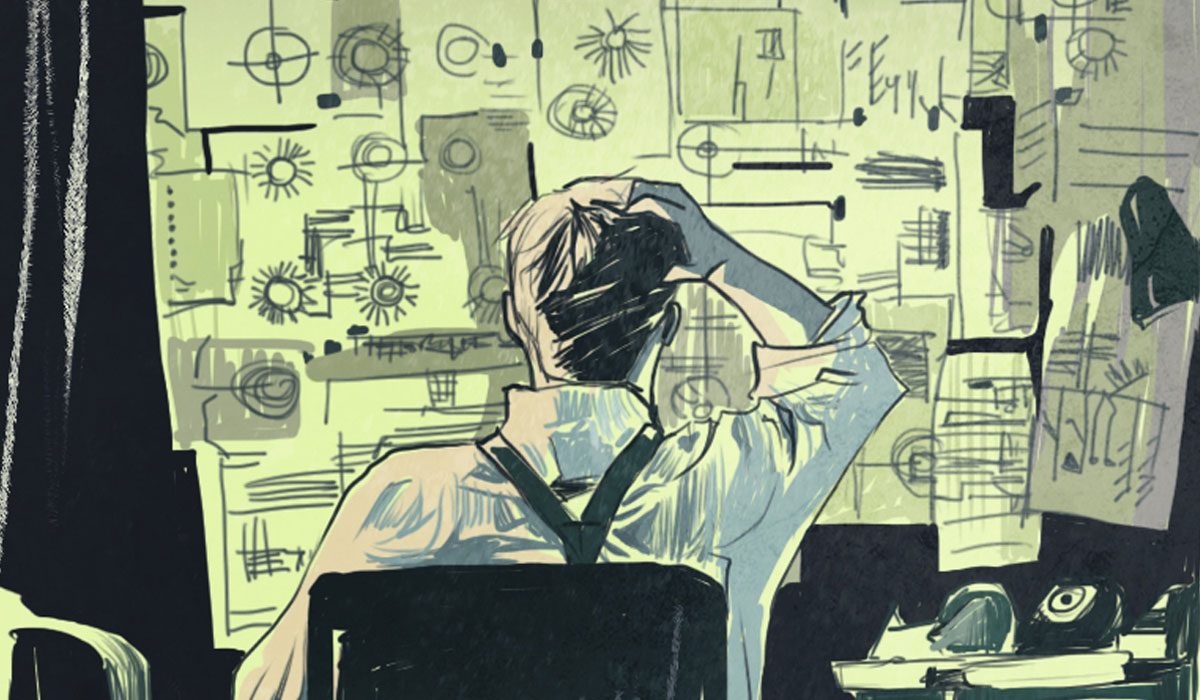
What is it about human nature that draws us to puzzles?
Our minds are trained by aeons of evolution to look for patterns. Puzzles are merely patterns that have been rearranged, scrambled. The moment that we realize this, we immediately want to restore order, to put the pattern back together properly with everything in its right place. Our brains are sometimes logical to a fault, and when things don’t fit together it can cause extreme anxiety.
Most of the time people get pleasure out of solving puzzles for the sake of accomplishing the task. It’s why newspapers have crosswords or sudoku puzzles in them. But in some cases there are real-world motivations that make finding the solution carry tangible gravity. Last year, courtesy of the biopic titled The Imitation Game, many became familiar with the story of Alan Turing and his team at Bletchley Park’s work to crack the encryptions that protected German communications from being intercepted during World War II. Cracking codes has been a part of almost every major military conflict since the advent of written language.
But what happens when the cypher you’re trying to crack is a work of art?
One high-profile example includes Kryptos, the sculpture commissioned for the CIA headquarters in Langley, Virginia, and made by Jim Sanborn. The sculpture includes four encrypted messages, only three of which have been publicly solved. It seems odd in this age of computer processing power that grows exponentially that an analog cypher could remain unsolved, and yet Kryptos has baffled cryptographers since its installation in 1990.
The first three codes in Kryptos have been solved, but to what end? The first code was a short poetic phrase that Sanborn composed, and which included an intentional misspelling. One assumes this was done to throw codebreakers off the scent, but you make that assumption at your own peril. When the codes are cracked, an encrypted piece of artwork immediately stops resembling a puzzle in any meaningful way. If you solve an encrypted message about an opposing army’s troop movements, you can immediately parse that information and put it to use. But this isn’t the case with artwork.
Sanborn’s encrypted phrase reads: “BETWEEN SUBTLE SHADING AND THE ABSENCE OF LIGHT LIES THE NUANCE OF IQLUSION.” The next cypher enigmatically alludes to something buried at a specific set of coordinates that are actually on the grounds of the CIA headquarters. The third code is a paraphrasing of explorer Howard Carter’s account of the discovery of Tutankhamun’s tomb in 1922. The fourth code remains unsolved.
What do the three codes that have been broken have to do with one another? Would the solution of the fourth one somehow tie everything together? It seems reasonable to conjecture that the answer is no. At least, not in a straightforward way. Therein lies the possibly maddening caveat in all artwork containing codes that can be broken: you’re not guaranteed to get a satisfying answer. Where does one turn from there? It seems reasonable that a codebreaker could crack all four cyphers in Kryptos and then, without a clearly understandable meaning, would continue to treat the solution to each code as part of a larger puzzle, still unsolved. And for all anyone knows that could be the proper course of action. Given their nature, puzzles aren’t solved until they form a recognizable pattern. Artwork that contains puzzles can be solved from a technical standpoint without ever forming a recognizable pattern. Conceivably, you could spend years trying to reshape a piece of art like Kryptos into a pattern with pieces that fit neatly together.
There is no one right way to experience artwork, it’s true.
For you, maybe the best way to look at Monet’s Water Lilies is hanging upside down from a bench, or spinning around wildly (though we do ask that you be careful). There are some wrong ways to examine artwork though, and treating a poem or a painting like a code with one correct solution is one wrong way. That’s what makes it so interesting when an artist chooses to use cryptographic elements in his or her work. It is difficult to tell whether this is done as a way of commenting on the inherently mysterious nature of a piece of art, by adding an additional layer of code on top of the already intrinsically enigmatic piece, or if it’s simply the artist’s way of throwing a bone to those viewers who crave logical rights and wrongs in all things. It could be both, or neither — another unsolved mystery.
Featured Gallery
Your Thoughts
- Have you ever created a secret code for communicating with someone?
- Do you prefer something like a crossword puzzle, with one correct solution that you can arrive at? Or a piece of artwork which can be interpreted in many ways, none of them necessarily right or wrong?
- Have you ever taken part in a session of exquisite corpse — in which each poet writes one line for a poem, with all the random lines then being stitched together to bring the formerly fractured corpse poem to life? What was the result?




































